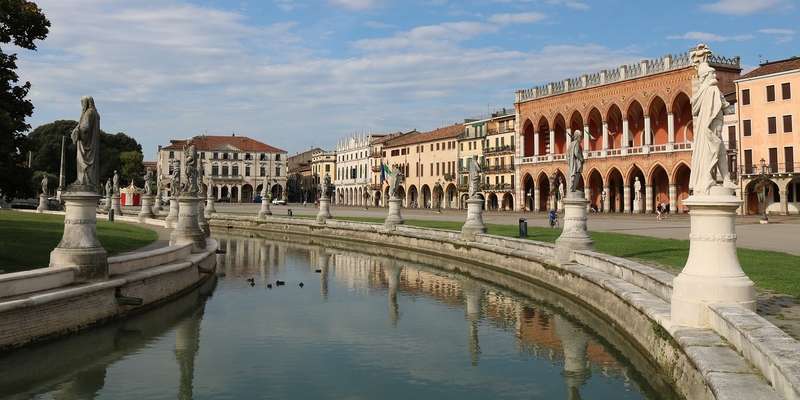- Home
- Useful Tips
- Padua's spring blossom...
While Padua's Botanical Garden draws blossom seekers like bees to nectar, 78% of visitors miss the city's other breathtaking floral displays according to local horticultural societies. The frustration of following crowds to single locations often leaves travelers with photos identical to millions online, missing Padua's true spring magic. Overbooked tours and limited opening hours at famous sites create unnecessary stress during this fleeting season when cherry blossoms may last just 72 hours. Those who know where to look discover medieval cloisters draped in wisteria, private palazzo gardens bursting with rare peonies, and canal-side pathways where petals float like confetti – all without jostling for space or paying premium prices.


Avoiding the crowds at Prato della Valle's secret blossom spots
Prato della Valle's elliptical square transforms into a floral wonderland each spring, yet most visitors cluster near the central fountains while missing the perimeter's spectacular displays. The southeastern quadrant near Café Pedrocchi hides a double row of mature cherry trees that bloom 1-2 weeks later than those in the botanical garden, extending your blossom viewing window. Local gardeners recommend early weekday mornings when the rising sun backlights the delicate petals. For photographers, the adjacent Santa Giustina basilica provides elevated views of the pink canopy contrasting with Renaissance architecture. Those willing to explore beyond the main paths find benches beneath ancient magnolias where students have studied since the 1600s – these quiet corners offer perfect picnic spots away from tour groups.
Timing your visit for maximum floral impact
Padua's microclimate creates staggered bloom times across the city, a phenomenon few travelers leverage. While the botanical garden's camellias peak in early March, the University's courtyard hellebores flourish through April. Local experts track urban heat islands that accelerate flowering near stone buildings versus cooler park areas. The Scrovegni Chapel's medieval walls shelter early-blooming irises, while the Eremitani district's canal breezes delay tulip displays by up to ten days. Savvy visitors coordinate with Padua's 'Fioriture in Città' program, where participating businesses display real-time bloom maps. This free resource reveals unexpected pockets like the Pharmacy Museum's rooftop garden, where medicinal plants burst into color alongside 15th-century herbals.
Accessing private gardens normally closed to public
Several aristocratic families open their historic gardens for limited periods during spring, offering intimate blossom experiences unknown to mass tourism. The Palazzo Zuckermann permits small groups to wander its boxwood parterres under 300-year-old Judas trees every Wednesday afternoon in April. More exclusive still are the hidden cloisters of Scoletta del Santo, where Franciscan monks cultivate heritage roses in geometric patterns unchanged since the Renaissance. Local cultural associations occasionally arrange visits to these spaces – advance registration is essential but costs little more than a museum ticket. For spontaneous travelers, many smaller courtyards reveal their blooms through ornate iron gates along Via Belzoni, where the scent of citrus blossoms perfumes the air above weathered brick walls.
Capturing perfect blossom photos without the crowds
Professional photographers favor Padua's lesser-known perspectives where architecture frames the fleeting beauty of spring. The Ponte San Lorenzo offers a unique vantage point to photograph wisteria cascading into the Naviglio canal, especially during golden hour when the water reflects both flowers and 14th-century bridges. For unconventional compositions, the Orto Botanico's original 1545 walls create stunning backdrops where modern visitors rarely venture. Those seeking human scale in their images find that the Porta Altinate's medieval arch perfectly frames cherry trees along Riviera del Ponti Romani. Local tip: Overcast days intensify colors at the Jewish Quarter's almond trees, while late afternoon light sets the University's pear blossoms glowing against terracotta roofs.



